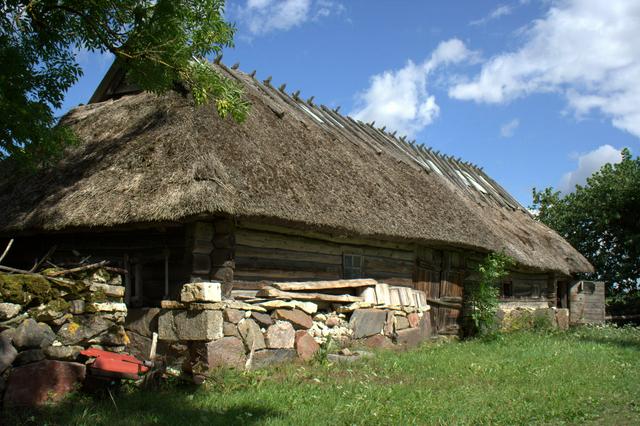Muhu is the third largest island in Estonia, although it is fairly small at 198 square kilometres. It's located between the mainland and Saaremaa Island.
- Kuivastu.
- Liiva. With the only school on Muhu.
- Koguva.
Kuivastu.
Liiva. With the only school on Muhu.
Koguva.
Over the centuries Muhu has developed at its own pace and its traditions are well known throughout Estonia. The famous Muhu patterns are a refined expression of folk art.
The inhabitants of Muhu call themselves Muhu people; a self chosen title which radiates a certain pride and feeling of being different from mainlanders or communities on other islands.

The nature of Muhu has been left largely undisturbed in the past fifty years. It's the natural habitat to 23 species of very rare orchids. Muhu is also home to many migrating birds, which take temporarily shelter in the various bays.
Villages on Muhu are even today still headed by traditional village eldermen, who take up the role of voluntary counsel. Many of the villages are charming in their simplicity and worth having a look (especially because in terms of tourism, Muhu has remained rather untainted so far).
- St Catherine Church. It's one of the oldest in Estonia and is notable for its trapezium-shaped tombstones with pagan symbols. The most intricate tombstone depicts the pagan Tree of Life.
- Üügu Bluff. It's the largest and most attractive of Muhu's many bluffs being ca. 300m long.
- Muhu Museum, Koguva village, Muhu vald. The museum is located in the beautiful Koguva village. It's also the birthplace of Estonian writer Juhan Smuul.
St Catherine Church. It's one of the oldest in Estonia and is notable for its trapezium-shaped tombstones with pagan symbols. The most intricate tombstone depicts the pagan Tree of Life.
Üügu Bluff. It's the largest and most attractive of Muhu's many bluffs being ca. 300m long.
Muhu Museum, Koguva village, Muhu vald. The museum is located in the beautiful Koguva village. It's also the birthplace of Estonian writer Juhan Smuul.
Each midsummer, a jazz music festival takes place in Muhu, featuring famous international musicians and attracts jazz fans from far and wide.
- Pädaste Manor, Pädaste village. See info in Sleep section below.
Pädaste Manor, Pädaste village. See info in Sleep section below.
- Saaremaa – The largest Estonian and wild seaside character island with castles and fortresses, one perfectly preserved, a beach, a spa and famous mills. Saaremaa is even sometimes called Sparemaa. Furthermore, the island itself is surrounded by a myriad of tiny islands including Abruka with its nudist camps.
- Hiiumaa– The second largest Estonian island. Popular for its lighthouses, ancient churches, historical values and the sense of humour of its inhabitants, but scarcely populated. In winter, it can sometimes be reached by car via an ice bridge on the Baltic Sea.
- Vormsi – The fourth largest Estonian island, very close to the mainland. Vormsi is a small island covered with forests and a Swedish community. A unique blend of Soviet and Swedish history mixed with unspoilt nature.
- Pärnu – Estonia's 4th largest city and the summer capital of Estonia, popular for its balneo-therapy complexes and spa centres, surrounded by numerous beaches.
